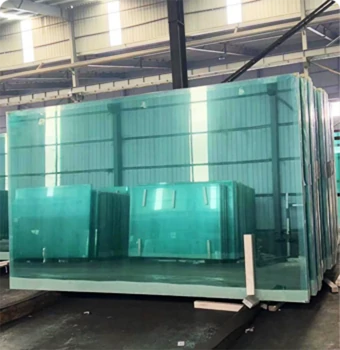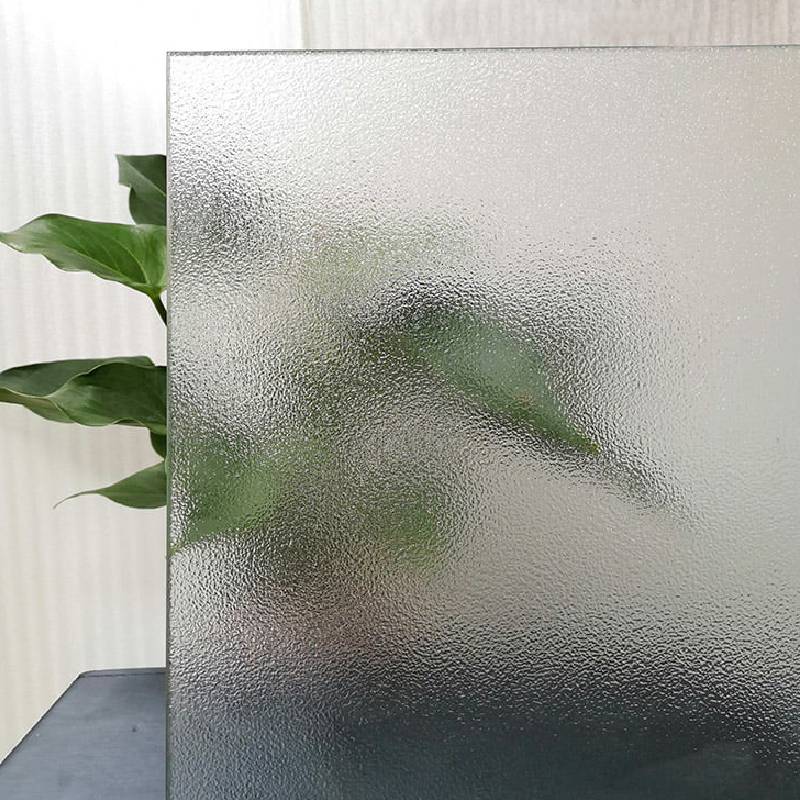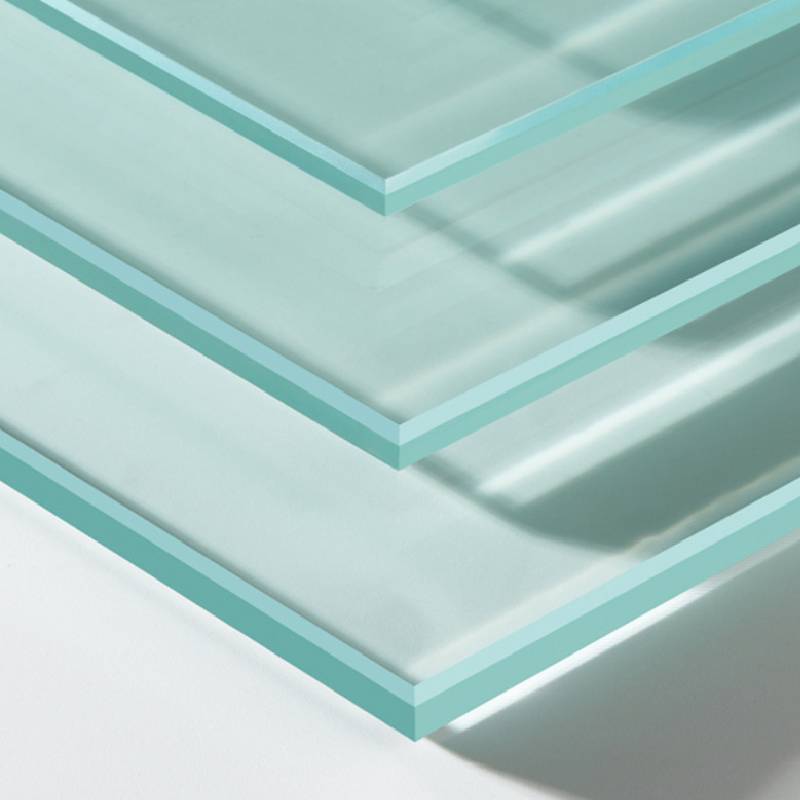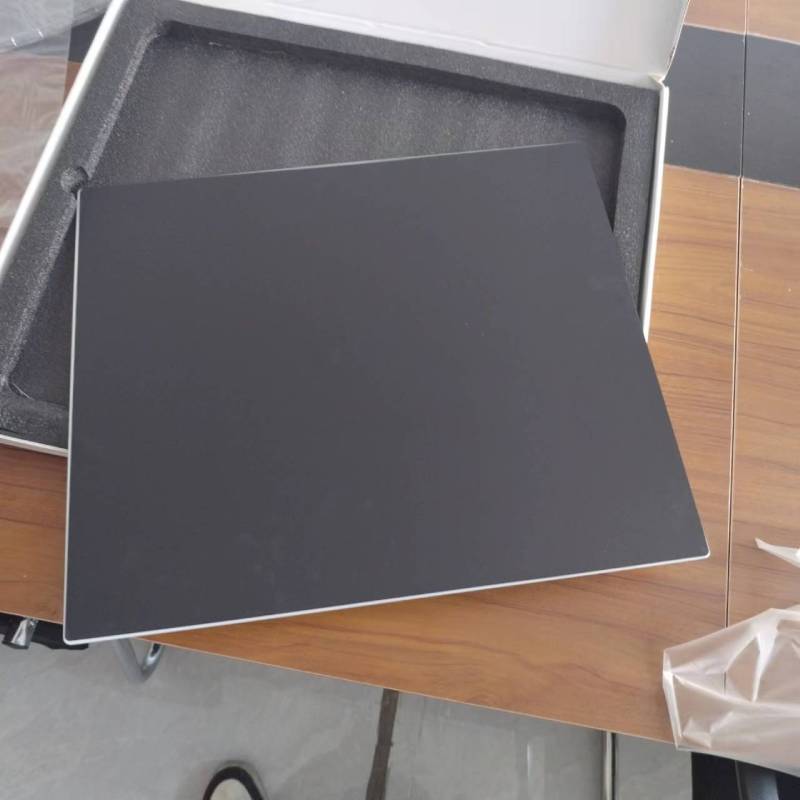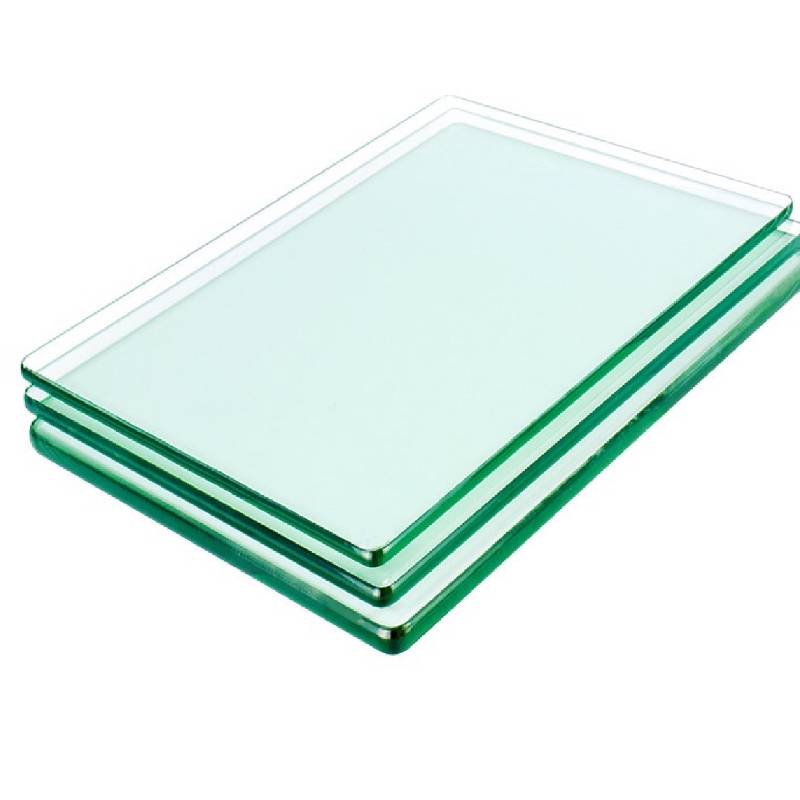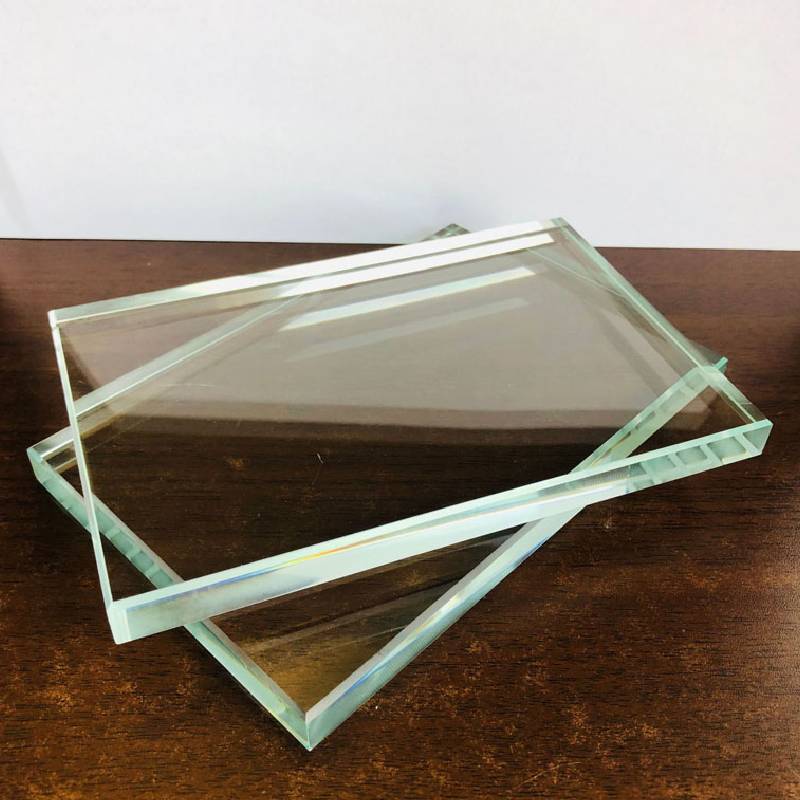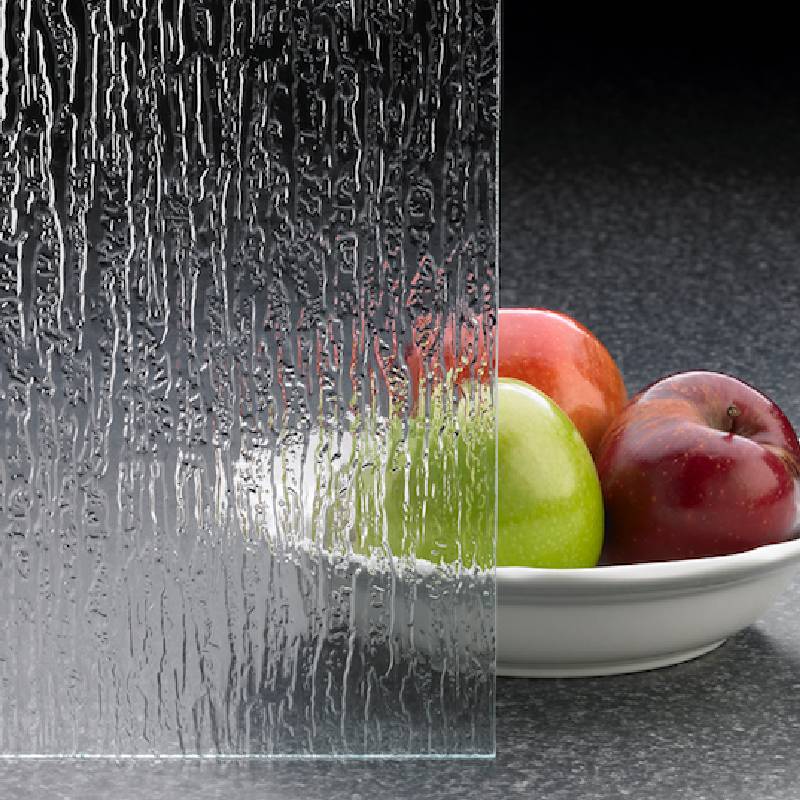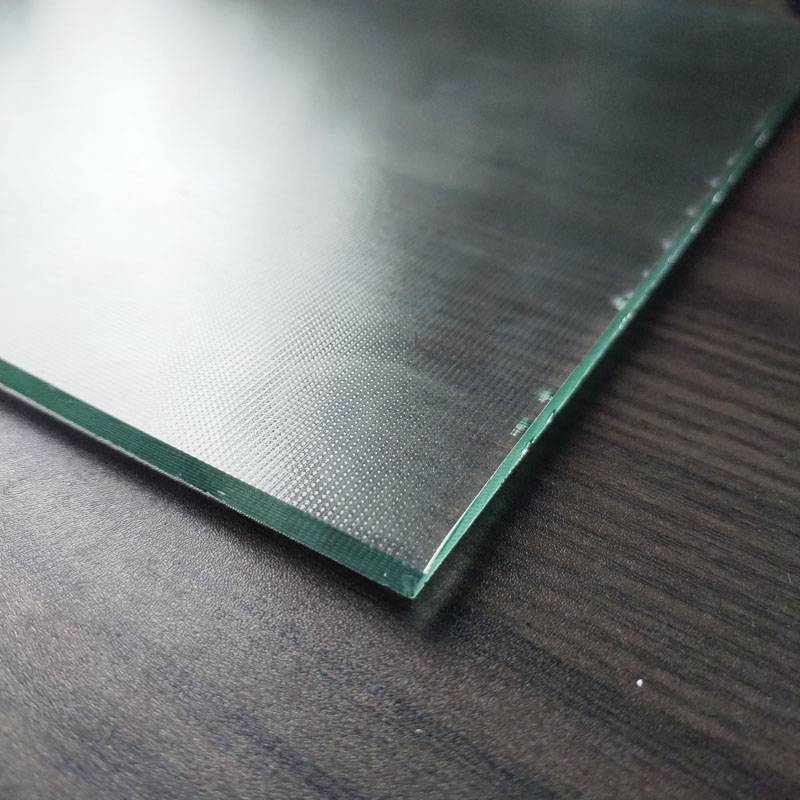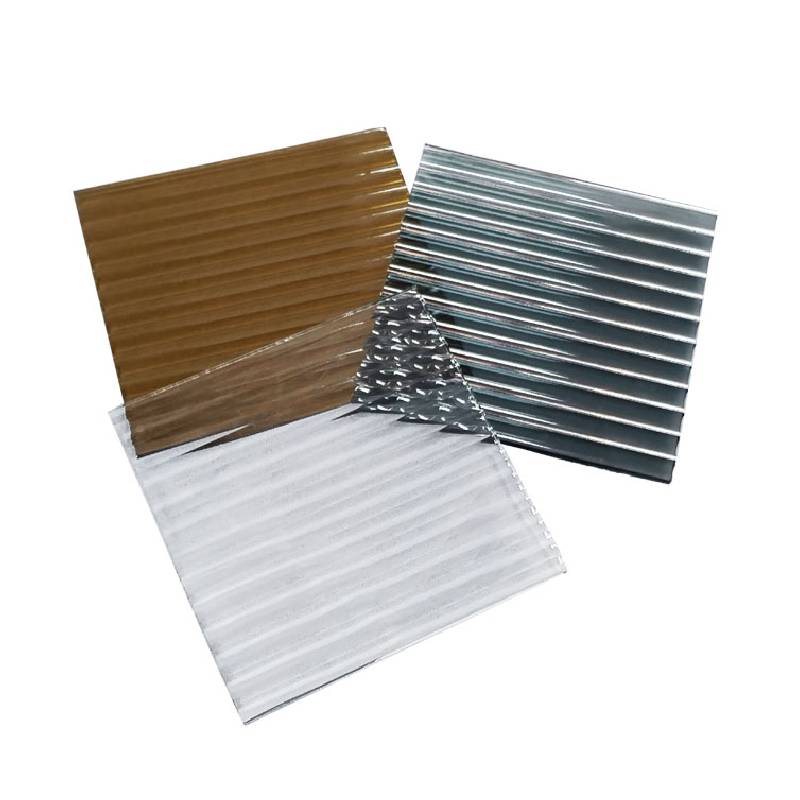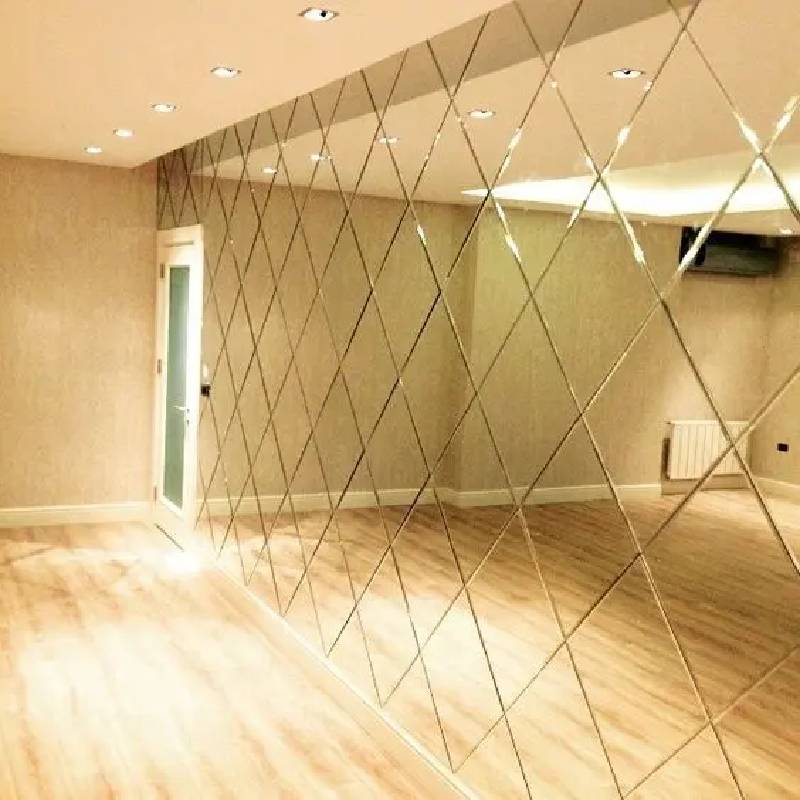Float glass means that the raw materials are melted at high temperature in the furnace. The molten glass continuously flows from the furnace and floats on the surface of the relatively dense tin liquid. Under the action of gravity and surface tension, the glass liquid spreads on the tin liquid surface. It is opened, flattened, and the upper and lower surfaces are formed to be smooth, hardened, and cooled before being led to the transition roller table. The rollers on the roller table rotate, pulling the glass ribbon out of the tin bath and into the annealing kiln. After annealing and cutting, flat glass products are obtained. The biggest feature of float glass is that its surface is hard, smooth, and flat. Especially when viewed from the side, the color is different from ordinary glass. It is white and the object is not distorted after reflection. In addition, due to the relatively good thickness uniformity, the transparency of its products is also relatively strong. It is precisely because of this transparency that it has a wider field of view. The broad field of view allows float glass to be used in many fields.
The production process of float glass is completed in a tin bath where protective gas (N2 and H2) is introduced. Molten glass continuously flows from the tank kiln and floats on the surface of the relatively dense tin liquid. Under the action of gravity and surface tension, the molten glass spreads and flattens on the tin liquid surface, forming an upper and lower surface that is smooth, hardened, and cooled. Then he was led to the transition roller table. The rollers on the roller table rotate, pulling the glass ribbon out of the tin bath and into the annealing kiln. After annealing and cutting, flat glass products are obtained. Compared with other forming methods, the advantages of float method are: it is suitable for high-efficiency manufacturing of high-quality flat glass, such as no corrugation, uniform thickness, smooth upper and lower surfaces, and parallel to each other; the scale of the production line is not limited by the forming method, and the energy per unit product Low consumption; high utilization rate of finished products; easy to scientifically manage and realize full-line mechanization and automation, high labor productivity; continuous operation cycle can last for several years, which is conducive to stable production; can provide suitable conditions for online production of some new varieties, such as Electric float reflective glass, spray film glass during annealing, cold end surface treatment, etc.
Float glass is widely used and is divided into tinted glass, float silver mirror, float white glass, etc. Among them, ultra-white float glass has a wide range of uses and broad market prospects. It is mainly used in the fields of high-end buildings, high-end glass processing and solar photovoltaic curtain walls, as well as high-end glass furniture, decorative glass, imitation crystal products, lighting glass, precision electronics industries, Special buildings, etc. Float glass has relatively good thickness uniformity and relatively strong transparency. Therefore, after tin surface treatment, it is relatively smooth. Under the action of smoothing, flame and polishing, it forms a surface that is relatively neat and flat. Glass with better strength and stronger optical properties. This kind of float glass has the characteristics of good transparency, brightness, purity, and bright indoor light. It is also the best choice for building doors, windows, and natural lighting materials. It is also one of the most widely used building materials. one.
The history of float glass can be traced back to the late 1950s. The British Pilkington Glass Company announced to the world that it had successfully developed the float forming process for flat glass. This was a revolution in the original grooved top forming process. However, the Western technology blockade at that time made China's float glass development and production have to take the path of self-reliance and independent innovation. In May 1971, the former Ministry of Building Materials Industry decided to conduct float process industrial trials in Luobo. Glass experts from all over the country gathered in Luobo, and more than a thousand employees of Luobo participated in the war. On September 23, 1971, under the guidance of department leaders and relevant experts, and with the full cooperation of fraternal units, the cadres and workers of Luoyang University worked together for more than three months and finally successfully built the first float. The glass production line produced my country's first float glass. From 1971 to 1981, CLFG implemented large-scale technical transformation on this line three times. The melting capacity of the production line reached 225 tons, the plate width exceeded 2 meters, and the overall yield reached 76.96%. At the end of 1978, In early 1979, thinner 4 mm glass was stably produced. The technology and equipment of "Luoyang Float Glass Process" were also improved day by day, and the technical level was continuously improved.
Ny tombony amin'ny fitaratra mitsingevana dia hita taratra indrindra amin'ireto lafiny manaraka ireto: voalohany, manana fisaka tsara izy ary tsy misy rano mikoriana; faharoa, ny fasika quartz voafantina dia manana akora tsara; fahatelo, madio sy mangarahara tsara ny vera vokarina; farany, ny rafitra Compact, mavesatra, malama ny mikasika, mavesatra noho ny takelaka fisaka isaky ny metatra toradroa mitovy hatevin`ny, mora tapaka ary tsy mora tapaka. Ireo tombony ireo dia mahatonga ny fitaratra mitsingevana be ampiasaina amin'ny fanorenana, fiara, haingon-trano, fanaka, teknolojia indostrialy ary indostria hafa.
- Ny hatevin'ny fitaratra mitsingevana
Haavo mahazatra 3mm, 4mm, 5.5mm, 6mm, 8mm, 10mm, 12mm
Ultra-manify 1.2mm, 1.3mm, 1.5mm, 1.8mm, 2mm, 2.3mm, 2.5mm
Haavo fanampiny 15mm, 19mm
Habe 1220*1830mm, 915*2440mm, 915*1220mm, 1524*3300mm, 2140*3300mm, 2140*3660mm, 2250*3300mm, 2440*3660mm
 AFRIKANINA
AFRIKANINA  albaney
albaney  Amharic
Amharic  Arabo
Arabo  Armeniana
Armeniana  Azerbaijani
Azerbaijani  Baska
Baska  Belarusian
Belarusian  Bengali
Bengali  Bosniaka
Bosniaka  biolgara
biolgara  Katalana
Katalana  Cebuano
Cebuano  Korsika
Korsika  Kroaty
Kroaty  TSEKY
TSEKY  Danoà
Danoà  Anarana iombonana
Anarana iombonana  anglisy
anglisy  esperanto
esperanto  Estoniana
Estoniana  Anarana
Anarana  FRANTSAY
FRANTSAY  Frisian
Frisian  galisiana
galisiana  Zeorziana
Zeorziana  Anarana
Anarana  GRIKA
GRIKA  Gujarati
Gujarati  Kreole Haitiana
Kreole Haitiana  hausa
hausa  Hawaii
Hawaii  Hebreo
Hebreo  tsia
tsia  Miao
Miao  hongariana
hongariana  Anarana
Anarana  igbo
igbo  indonezianina
indonezianina  TENY IRLANDEY
TENY IRLANDEY  ITALIANINA
ITALIANINA  Anarana
Anarana  Javaney
Javaney  Kannada
Kannada  kazakh
kazakh  Khmer
Khmer  Rwanda
Rwanda  Koreana
Koreana  Kiorda
Kiorda  Kyrgyz
Kyrgyz  TB
TB  Latina
Latina  Zavatra tsy
Zavatra tsy  litoanianina
litoanianina  Luxembourgish
Luxembourgish  Masedoniana
Masedoniana  Malagasy
Malagasy  Malay
Malay  Malayalam
Malayalam  Maltais
Maltais  Maori
Maori  Marathi
Marathi  Mongoliana
Mongoliana  Madagascar
Madagascar  Nepali
Nepali  norvejiana
norvejiana  norvejiana
norvejiana  Occitan
Occitan  Pashto
Pashto  PERSANINA
PERSANINA  poloney
poloney  portogey
portogey  Punjabi
Punjabi  Malagasy Romanian
Malagasy Romanian  ROSIANINA
ROSIANINA  samoanina
samoanina  Gaelika Scottish
Gaelika Scottish  serbianina
serbianina  anglisy
anglisy  Shona
Shona  Sindhi
Sindhi  Sinhala
Sinhala  silaovaka
silaovaka  Slovenianina
Slovenianina  Somali
Somali  Fikarohana
Fikarohana  Sundanese
Sundanese  swahili
swahili  Anarana
Anarana  Tagalog
Tagalog  Tajik
Tajik  Tamil
Tamil  Tatar
Tatar  Telugu
Telugu  Thai
Thai  Tiorka
Tiorka  Turkmen
Turkmen  OKRAINIANA
OKRAINIANA  Urdu
Urdu  Uighur
Uighur  Uzbek
Uzbek  vietnamiana
vietnamiana  valesa
valesa  Vonjeo
Vonjeo  Yiddish
Yiddish  Yoruba
Yoruba  Zulu
Zulu 

